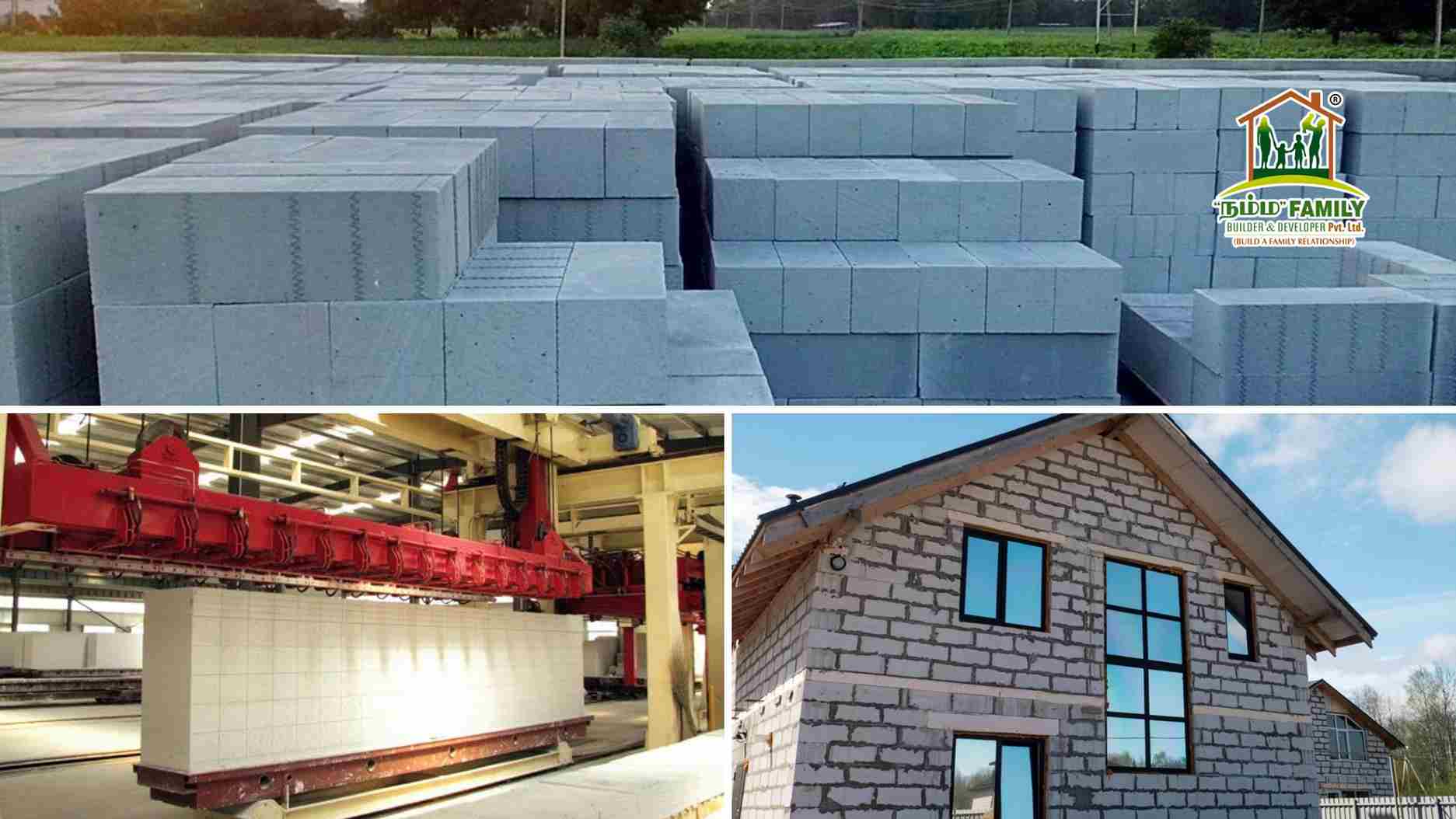
AAC Blocks: Size, Shape, And Manufacturing Process

What Are AAC Blocks?
- AAC stands for autoclave aerated concrete. These are low-maintenance building materials with excellent thermal insulation and durability. A building with this block prevents heat from entering and keeps the building cool. These blocks are made from sand, lime, water, Portland cement, and aluminum powder.
- These are proliferating in the construction industry and are very easy to handle as they are very light in weight. This Aac is foam concrete and a sustainable construction material.
Types Of AAC Blocks
- Fire Resistant Blocks.
- 200 Mm Block.
- 100 mm Block.
- Long-lasting Block.
- Rectangular Fly Ash Blocks.
Features Of AAC Blocks
- These blocks are commonly used construction materials instead of red brick.
- These are much lighter in weight than red bricks.
- These are manufactured in many shapes and sizes.
- They also have improved fire resistance for up to six hours at 1200 degrees Celsius.
- Their energy efficiency is higher than that of clay bricks.
AAC Block Size, Shapes, And Prices
Manufactured in various shapes and sizes to meet all types of construction needs. These blocks are manufactured in various shapes. They are:
U-shaped beams: These shapes are made in 8-inch, 10-inch, and 12-inch thick options.
AAC Blocks: These types of blocks are built in large quantities and are attached to the structures under construction.
Chord blocks: These are used to create spans. Manufactured by aerated concrete manufacturers.
This block’s prices vary depending on the manufacturer. These range from 2000 to 3500 per cubic meter. Prices vary depending on the quantity and pieces you purchase.
Uses Of AAC Blocks
- These blocks are generally prefabricated building material that provides structural, fire, and fire resistance at the same time. It is made from silica-rich material such as sand, fly ash, etc.,
- which is then combined with foaming material and lime. After this, the material is heated by ‘autoclave’ pressure. These blocks are very popular in the construction industry due to their good strength and high energy efficiency.
- They are fire resistant. They are used for the construction of many apartments, hotels, hospitals, and industrial commercial buildings and houses. This makes them an ideal material for large tall buildings.
Manufacturing Process
- Cement: OPC grade 53 cement is suitable for making blocks because it hardens other materials by combining them.
- Lime: Limestone is obtained from the dealer in powder form or crushed into a fine powder at the factory.
- Fly Ash: Fly ash is an industrial waste material that reduces construction costs. It provides fire-resistant thermal insulation and sound absorption.
- Aluminum Powder: Aluminum is an expanding agent used as a foaming agent in blocks, providing good strength.
Advantages Of AAC Blocks
Sustainable And Eco-friendly
These blocks are manufactured using natural non-toxic materials with waste. Recycled industrial waste, non-toxic materials, and low energy consumption make them eco-friendly and sustainable. The waste produced is recycled and used to make bulk.
Lightweight
These blocks are three times lighter than brick and thirty times lighter than concrete. These blocks are traditionally half the weight and ten times the size of a brick. These help in building tall buildings.
Fire Retardant
This block is fire resistant, so they are non-flammable and can withstand up to 6 hours of direct sunlight. They are very heat resistant and very safe.
Acoustic Performance
As these blocks are naturally porous, they are capable of absorbing sound. Due to this nature, it prevents all kinds of noise in schools, offices, and colleges.
Fast Construction
These blocks reduce construction time and simplify. These blocks of different sizes reduce the number of joints in masonry walls. They are very light in weight, making them easy to carry and carry. They are easy to cut, shape, and fix.
Thermal Insulation And Energy Efficiency
These include small air holes and thermal blocks that provide thermal insulation. By infusing a building with hydrogen foam, the material provides excellent thermal insulation.
Sustainable And Affordable
These blocks use natural and non-toxic raw materials to generate minimal waste. The waste produced can be recycled and used to make aggregates. As they are made of non-biodegradable material, the buildings are durable. It is very energy efficient and reduces labor costs.
Disadvantages
- As these AAC blocks are fragile, care should be taken while handling and transporting them.
- If you buy these separately, the cost will be high, but if you buy them in bulk, the cost will be reduced. When using this, a cement motor is used.
- These blocks are highly water absorbent and expand when water is absorbed and contract when moisture is lost, causing cracks in buildings.






